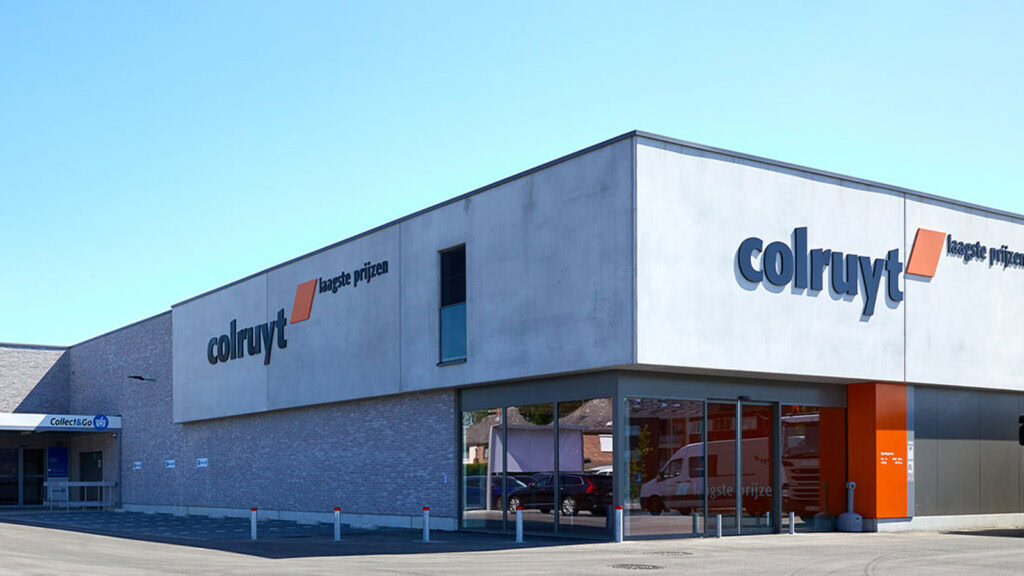S Group opened the unique and multi-channel Omat ostot (My Purchases) service, which allows customers to analyse their consumption, taking advantage of the wide-ranging and detailed data in Finland. The new kind of transparency in consumers’ own purchasing behaviour made customer owners immediately fall in love with the easy-to-use service.
Background
Data is both interesting and intimidating to use. Data is controlled by big, often multinational companies, and consumers typically do not trust their ability to manage their personal data. This situation was not improved by the reports on data and data security dominating the news media in 2018. Facebook’s Cambridge Analytica scandal, continuous data leaks, and the GDPR legislation made it to the news time and again.
Even so, 2018 was also recognised as a golden year of data use as well as self-measurement and the measurement of consumption. Data—on everything from energy consumption to people’s own exercise or diets—was of interest to the public at large. While the consumption indicators offered by banks offer much in the way of a service, they cannot respond to the most intriguing consumer question, given that they show shopping as receipts only, rather than row by row. S Group understood its unique opportunity to develop a service focused on consumer data in Finland: 3.7 million Finns hold a green S-Etukortti card, and in addition to grocery stores the company’s green ecosystem is made up of a bank, hotels and restaurants, hardware stores, a chain of service stations as well as services ranging from a funeral parlour all the way up to opticians’ stores.
For a long time now, loyalty programmes such as S Group’s bonus programme have been based on the bonuses or other price advantages earned by customers – by concentrating your shopping, you get more money back. Despite this, customers divide their purchases among different chains. Variety-seeking buyers, bargain hunters and those who have their eye on prices had not seen any concrete evidence of the benefits of concentration, because the data had not been provided to consumers at a level of detail which would have interested them; nor had it been visualised in the right way. S Group’s loyal customer data was considered to enable purchase monitoring on the level of individuals. The data had remained entirely unused before, even though the bonus data is a set of data which allows for the most detailed analysis of consumption in Finland.
Regardless of the knotty starting point, S Group decided to take on the challenge. The cooperative’s values include openness, and its desire to be as transparent as possible, also towards its customers, extends to the use of data. This led to the idea of a service which is safe, completely transparent and would help customers to manage their finances in the spirit of a traditional cooperative.The challenge was nevertheless enormous: In addition to visualising the purchases of 3.7 million loyal customers, the service needed to interest young, new and old loyal customers and provide particularly families with as comprehensive and genuine an advantage as possible.

Starting point
We wanted to give consumers a chance to sit in the driver’s seat in the management of their own data and to create a service which is unique, even on the global scale, and would help people manage their everyday choices in a comprehensive way. But we needed further investigations.
According to a study commissioned by S Group, 50% of Finnish people believe that more detailed data on their own purchases would influence their purchasing behaviour.
“We use customer data to develop services that benefit the customer themselves, first and foremost. We believe that the easy monitoring and use of personal purchasing data could be an even more important reason for many customer-owners to use their green card in the future than the bonuses they earn.” – Veli-Pekka Ääri, Vice President, Customer Accounts, Communication and Digital Services, SOK
The study encouraged S Group to develop service – if the service could get, say, half of S-Etukortti cardholders to shop more frequently in S-Group’s stores than in the stores of a competing chain even once a month, this would translate into more than EUR 600 million in additional revenue.
Strategy
We decided to bring an entirely new perspective into loyal customership: instead of hoarding data, we’d offer a service which would benefit customers, guide their purchasing decisions and concentrate their purchases in S-Group.
Our ambitious vision for the service was for S-Group to make its customer-owners the world’s smartest consumers.
“A very well-implemented service. Thanks to this service alone, I’ll concentrate my purchases even more closely in the stores of S Group in the future, so that I can analyse my purchasing behaviour more comprehensively. Thank you!” End-user’s comment
The result was the Omat ostot service, in which customer-owners can see every row of their receipts, in which purchases are categorised in a way that is useful for them, and in which consumers can monitor their own spending. In the initial phase, the service includes only S Group’s retail operators.
Objectives
Critical values were deemed to include genuine help for customers in their everyday lives or, in other words, loyal customers to perceive the service as useful. Inspired by the results of our study, we also set ourselves the goal that more than half of the service’s users should perceive it as something that has an impact on their purchasing behaviour.
“The positive aspect of it is that the Omat ostot service also gives something back to me. The view into my own purchases on the product level was shocking (convenience foods, sweets), but it helps me to change my purchasing behaviour.” End-user’s comment
S Group aimed to launch the service without the support of paid media in a way that would nevertheless pique the interest of both consumers and the media.
Implementation
Making use of customers’ identified purchases and S Group’s product classifications, we built a service in which our customers can see, up to a euro, which purchases they spend their money on and how much money they spend on various product categories.
The service provides answers to the question of everyday life, such as “Is my family eating enough vegetables?”, “How many kilos of meat do we consume a month?”, or “How big a dent does nicotine gum make in my savings a month?”.
“Plastic bags were a point of interest. I could see how many of them we use. Thanks to Omat ostot, we’re not buying as many anymore!”. End-user’s comment
At the moment, the service offers six views:
- Purchased products
- Fruit and vegetables
- Purchase transaction
- Purchase locations
- Purchasing rhythm
- Plastic bags
The service is continuously upgraded with new features based on customers’ wishes and feedback. By enriching customers’ purchasing data with product information and classifications, and by visualising the data in graphs that are easier to read, we were able to create substantial added value for our customer-owners: we give both customers careful with their money and consumers who make value-based purchasing decisions a chance to review their own consumption.
By enriching customers’ purchasing data with product information and classifications, and by visualising the data in graphs that are easier to read, we were able to create substantial added value for our customer-owners: we give both customers careful with their money and consumers who make value-based purchasing decisions a chance to review their own consumption.
All of this data was made available to customers through the Omat ostot website, accessible with the help of secure online banking code authentication.
The launch did not spend any money at all on bought media; rather, S Group’s own media and earned media functioned as the distribution channels. “Given that data was such a massive topic, various media outlets took up the subject and our Omat ostot service was written about or reported on extensively in Helsingin Sanomat, Yleisradio, Ilta-Sanomat, Talouselämä and a number of regional newspapers. The service also stirred up positive discussion in the often data-sensitive Reddit and, through Reuters, also spread internationally, to the C-net news site, for example. Following its launch, the service also received a lot of attention on Twitter.”
“Perhaps the most useful online service related to shopping since online banking.” End-user’s comment
S Group managed to turn consumers’ data scare, brought on by the data-focused news, into a victory and create an advantage that also guided purchasing behaviour for its customer-owners.
- More than 34,000 Finns took the service into use during its first week.
- The number of users has grown to more than 60,000 over the first six months.
- 91% of the service’s users considered it useful for themselves.
- 93% of users thought it important that S Group is developing a service which allows customers to monitor their own spending.
- 51% of users reported that the service influences their purchasing behaviour.
- The service brought new customer-owners to S Group.
- It made consumers who had no faith in bonuses also use their loyal customer cards.




